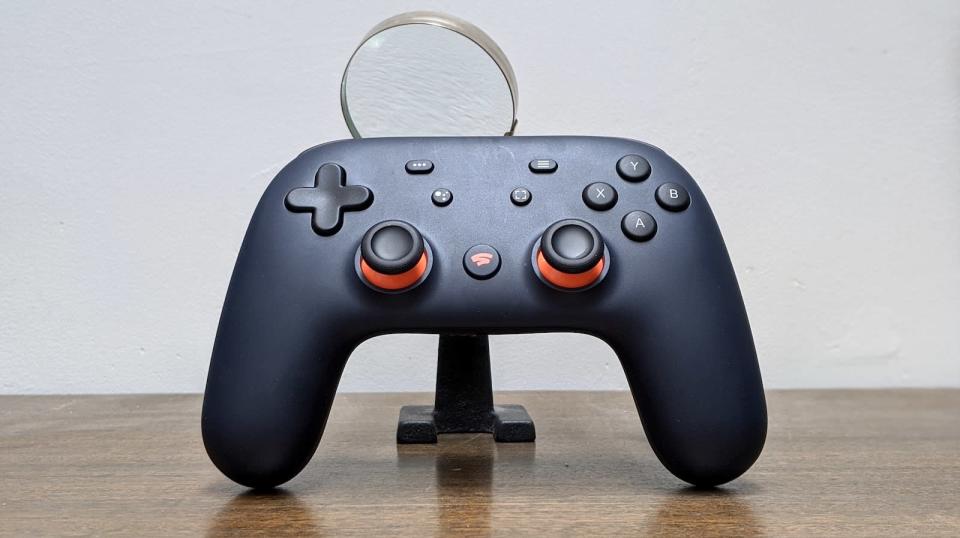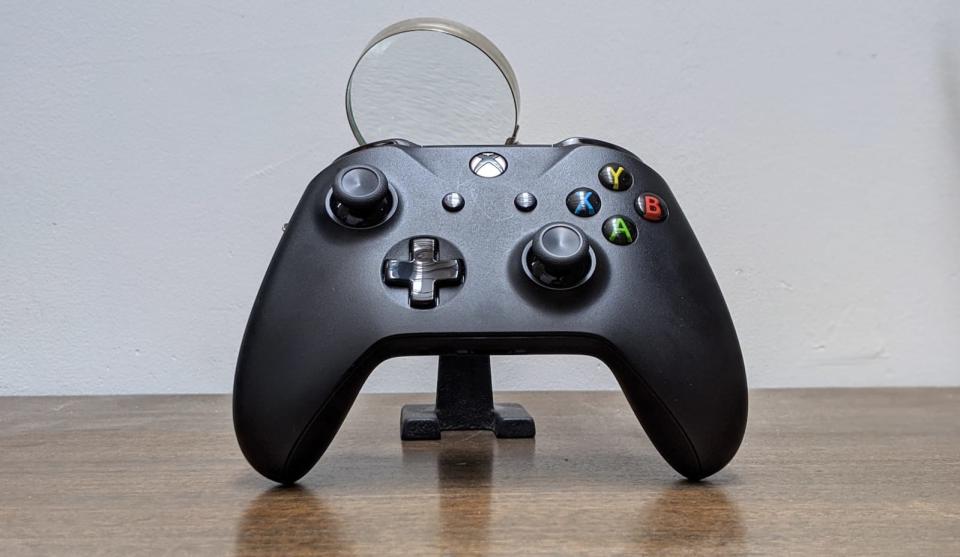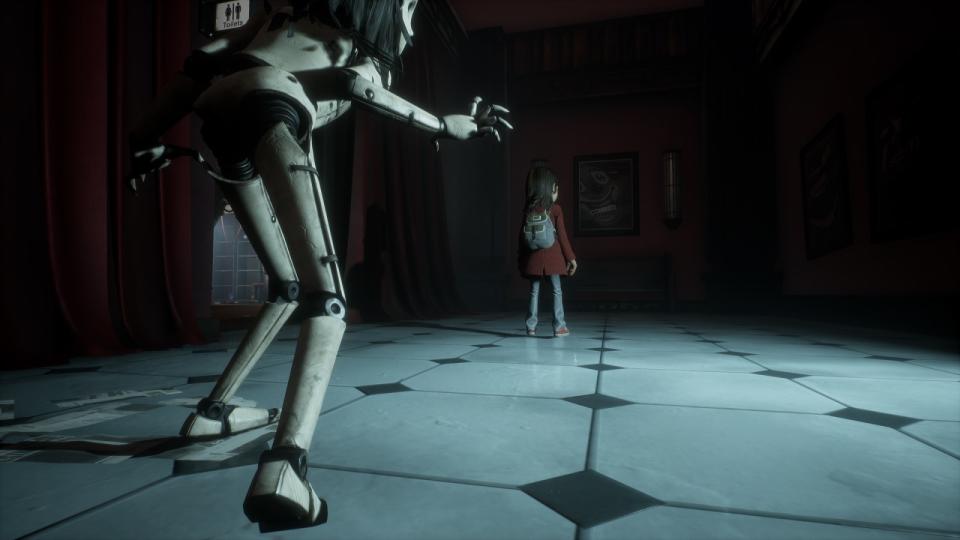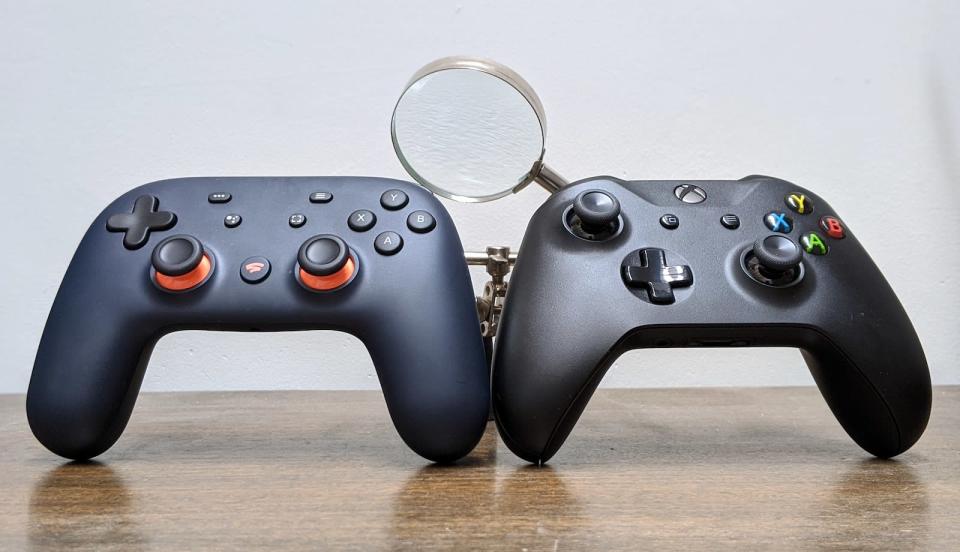Stadia vs. xCloud: How these game-streaming services stack up
We look at data, resolution and framerate, lag, games and price.
Cloud gaming has finally arrived in a playable, frustration-free form (mostly, anyway), courtesy of two tech giants with the network infrastructures to actually make streaming happen: Google and Microsoft. However, both companies are diving into this all-digital, subscription-based market from different angles. Stadia officially landed on November 19th, and it's fair to say that Google overpromised and underdelivered on an ambitious launch that costs gamers $130 just to get in the door. Meanwhile, Microsoft is rolling out xCloud for free as a preview, asking for feedback and adding features as it goes.
Now that both of these streaming services are playable in the wild, it's time for a good old-fashioned showdown. Considering one service has launched and already disappointed its supporters, and the other is in beta and delivering on its claims, you can probably guess which one comes out looking better here.
Most of the testing I've done has been on my home WiFi network, which averages 30Mbps to 40Mbps down and just under 10Mbps up. This is just within the connectivity ranges that both Google and Microsoft recommend for high-quality streams.

Stadia runs on a handful of platforms: Pixel phones, tablets and laptops via the Chrome browser, and on specially updated Chromecast Ultras. It doesn't function over mobile data, and the Stadia controller works wirelessly only on Chromecast. The gamepad has to be physically plugged into all other devices for now. XCloud, meanwhile, runs on Android phones only, and functions with Bluetooth controllers like the Xbox One wireless model. Stadia also supports Bluetooth controllers on laptops, tablets and phones.
Both services work surprisingly well. On my WiFi network, I've streamed hours of Destiny 2, Hitman, Bloodstained, Mortal Kombat 11 and plenty of other games without major issues. Stadia and xCloud are far from perfect -- they still stutter, resolution dips throughout gameplay, and input lag remains a legitimate issue -- but they're playable without much frustration. They're proof that streaming video games can work in 2019.

But, a word of caution: Just because Stadia and xCloud work overall for me, doesn't mean they'll work for you. As we've previously covered, all of this is highly dependent on your own WiFi situation, and individual results will vary. However, in this instance, we're simply using my network as a baseline comparison tool.
So, how do the services stack up against each other? To find out, we've determined five points of interest: data usage, resolution and framerate, latency, game selection and price.
Data usage
Google's big claim is the ability to stream games in 4K, with HDR, at 60fps on supported platforms and in this effort, Stadia gobbles up a lot of data. The company says Stadia will use between 4.5 and 20 gigabytes of data per hour, and these estimates are playing out in the real world. Many early players report using 15 to 20GB of data per hour. This makes sense, for early adopters with solid WiFi speeds and 4K-capable televisions. Stadia automatically feeds in the highest-possible game quality given a player's network, though there is an option to lock resolution at 720p.
On the other hand, Microsoft doesn't offer concrete data estimates for xCloud. However, preview players are reporting using just under 3GB of data per hour. Of course, Microsoft's streams are capped at 720p and therefore consume less data. XCloud will eventually target higher resolutions, as Microsoft plans to shift focus to PC and console streaming in 2020.
Microsoft provided the following clarification on its post-mobile xCloud goals:
Right now, in the Project xCloud preview, the technology is running on Android (6.0 or greater) phones and tablets with Bluetooth 4.0. Starting next year, we'll bring Project xCloud to Windows 10 PCs, and are collaborating with a broad set of partners to make game streaming available on other devices as well, including iOS.
Resolution and framerate
Google has been screaming since day one about Stadia's ability to handle 4K streams, with HDR, at 60fps. Stadia boss Phil Harrison even said, just a month before launch day, that all games on the service would support 4K and 60fps. So, it was a surprise to players when they discovered two of the highest-profile titles on Google's list, Destiny 2 and Red Dead Redemption 2, weren't actually streaming in 4K. Both of these games are upscaled on Stadia: Destiny from 1080p and Red Dead from 1440p. Red Dead is locked at 30fps, while Destiny 2 hits 60fps, which is actually higher than the console version of the game.
Stadia can stream games at 4K and 60fps, and it proves this feat with Shadow of the Tomb Raider, arguably the prettiest and smoothest title on the service.
Google sent along the following statement regarding 4K games on Stadia:
Stadia streams at 4K and 60 FPS -- and that includes all aspects of our graphics pipeline from game to screen: GPU, encoder and Chromecast Ultra all outputting at 4K to 4K TVs, with the appropriate internet connection. Developers making Stadia games work hard to deliver the best streaming experience for every game. Like you see on all platforms, this includes a variety of techniques to achieve the best overall quality. We give developers the freedom of how to achieve the best image quality and frame rate on Stadia and we are impressed with what they have been able to achieve for day one.
We expect that many developers can, and in most cases will, continue to improve their games on Stadia. And because Stadia lives in our data centers, developers are able to innovate quickly while delivering even better experiences directly to you without the need for game patches or downloads.
Microsoft doesn't make any all-encompassing 4K claims with xCloud -- at least not yet. Since the service runs on mobile devices only at this time, 4K isn't even the objective. Streams are currently capped at 720p, and the framerate of individual games will mirror their output on Xbox One S. Here's how Microsoft explains it to Engadget, complete with details about xCloud's approach to refresh rates:
The game's framerate will be whatever it would have been on an Xbox One S (for now). The video stream framerate is independent of this, and is always locked to 60 Hz (for now). In other words, we capture the game's frames exactly the same as they would have been displayed to a 60 Hz monitor.
Latency
This one is a little trickier to judge, but I can confirm off the bat that both services suffer from higher levels of input lag than their hardware-based counterparts. It takes a second at the start of each game to find your button-pressing rhythm, and lag is a constant, surprise threat, regardless of what title you're playing. Again, even though xCloud and Stadia function well enough, I wouldn't view streaming as a platform for competitive gaming just yet.
Early tests see Stadia games with input latency of 100-220ms -- that's about 50ms higher than the Xbox One X versions of these titles. It's harder to pinpoint specific input lag figures for xCloud, but I can tell you how it feels. On average, xCloud is slightly more sluggish than Stadia, and input latency feels a tad more extreme. Audio and visual stuttering is an ever-present issue in some titles, though no game on the service is completely free of input lag.

Games
Google is a relative newcomer to the gaming industry and it's essentially building relationships with developers from scratch. The company hired former Xbox and Sony executive Phil Harrison to lead Stadia, and it brought on legendary Assassin's Creed producer Jade Raymond to cultivate partnerships with fresh and new studios. That said, Stadia has 22 games at launch, including one exclusive: Gylt by Tequila Works.
Microsoft is a powerhouse in the gaming industry. The company has been buying studios and partnering with developers of all sizes for years, and it has a lineup of franchises ready to be unleashed in the streaming age. In preview, xCloud already supports 53 titles, with a handful of exclusives like Gears 5, Sea of Thieves, Halo 5 and Forza Horizon 4.
Price
Stadia is the only service here that's actually launched in full, and it's doing so with a convoluted pricing model. Right now, if you want to try Stadia, it'll cost $130 for the Premiere Edition, which comes with a branded controller. On top of that, it's $10 a month for Stadia Pro, a subscription service that provides access to 4K streams, and offers free and discounted games in the store. Plus, Pro players will get one free game a month, similar to Xbox Live Gold or PS Plus. In the future, Stadia will be accessible for free, though you'll have to purchase games at full price and streams will be capped at 1080p.
Microsoft has been running gaming-subscription services for years.
Microsoft hasn't announced a complete pricing model for xCloud, but it recently revealed the service's next steps. Once it leaves preview, Xbox Game Pass members will be able to stream Xbox games that they own from the cloud. This is a half-step toward opening up xCloud to a broader audience. Xbox Game Pass is a $15-a-month subscription service that combines Xbox Live Gold and access and a library of downloadable games at no extra charge. Microsoft has been running gaming-subscription services for years, and you can bet that the company continues this model with xCloud. But for now, xCloud and all of its games are free to preview players.

Wrap-up
On the surface, xCloud and Stadia are two functional cloud gaming services that offer different types of experiences. As it stands, xCloud is for Android owners and Microsoft fans, while Stadia is for folks with high data allowances who want to play gaming's greatest hits on 4K TVs. The biggest hurdle for either service lies in messaging.
The Stadia launch has been largely underwhelming because Google promised too much, too soon. Saying all games would play at 4K and 60fps only set players up for disappointment when their favorite titles played in upscaled 4K instead. Streaming a game as vast and detailed as Red Dead Redemption 2 at this quality is truly an accomplishment, but compared with Google's stated 4K goals, the experience falls short.
Microsoft, meanwhile, is streaming games at 720p to a limited pool of devices, and xCloud feels like a success. This isn't necessarily because it functions better than Stadia -- in fact, xCloud is slightly more sluggish and not as pretty as Google's service. The big difference is, Microsoft isn't dangling a 4K carrot in front of its early players. It's taking things slow and steady.
We all know how that race turns out.

